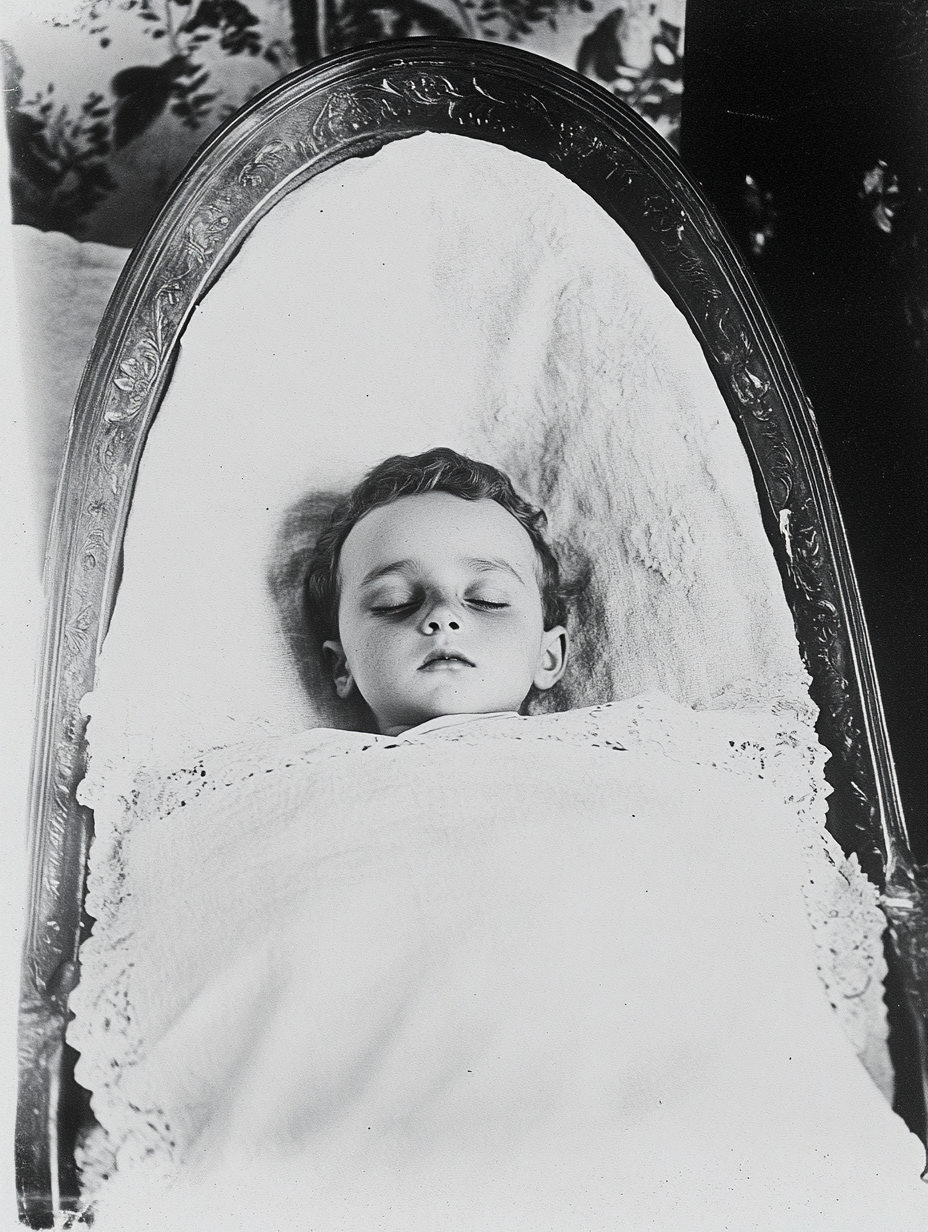Ars Moriendi - An AI generated post-mortem photography collection.
Post-mortem photography, a relic of the 19th century and beginning of the 20th, holds a unique place in the annals of visual culture, capturing poignant moments between life and death with haunting beauty. The practice still exists today and plays a unique part in helping the mourner to grieve through the image of their deceased loved ones.
With the rise of artificial intelligence, I wanted to explore the cultural and visual aspects of this practice, recreate memorial images and their aesthetics, to interrogate our ability to make connections with anonymous deceased people, maintain our capacity to have empathy when facing death and the unknown, and question the ability of AI to learn funeral rituals in a uncertain way,
This page includes very realistic AI generated post-mortem images of children and infants.
This material may be distressing or triggering for some viewers. Please proceed with caution.
Anonymous women on her death bed, 1879
-
Always with a respectful and dignified approach, and considering the confusing and frightening aspects the images can have on a contemporary public, the recreation of mortuary images, paves the way for mourning rituals for fictional lives. They act as cathartic, enigmatic, and powerful catalysts. Thereby it allows us to imagine connections and maintain our humanity in all its vulnerability. These same connections that forge indispensable resilience in the face of the challenges of our ephemeral existence. In a contrasting era seemingly fostering isolation, primarily in Western countries, I believe it is crucial to preserve our capacity for empathy, emotional connection. Through this collection, I aim to question the psychological part images can have on us, when a time of connection, grief and silence is needed in our lives, and how IA may have a strong impact in this matter.
to reinvent an aesthetic and almost ritualistic practice of images, that aimed to connect to our universal fragility and mortality. Thus, I strive to treat these AI-generated images with the same respect as the originals, acknowledging that they are imbued with a familial and traditional history that now resonates on a collective scale.
Throughout history, these images have transitioned from the status of familial and intimate archives to that of a collective memory through digital means, subject to the judgment of a sometimes uninformed public about outdated practices, conditioned by the taboo nature of death. Through these images, we can understand and feel that AI not only feeds itself on our history but also on our dead. AI learnt our funerary practices, among many things, with all the delicacy, tenderness in them, and has never been as human to me as when reproducing our most emotional and instinctive language that we can express when we are vulnerable. Therefore, AI technology knows our mortality, and perhaps it will learn our rites before also relegating us to the realm of a bygone era.





























































































































